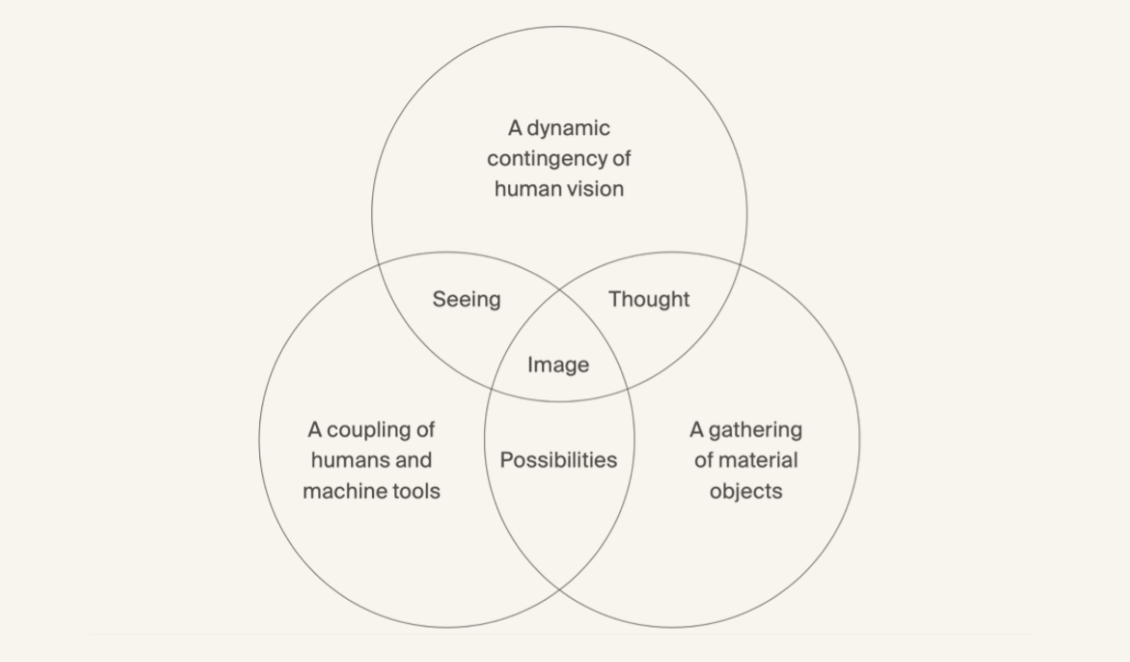Computational Images
The Specter of Representation
“Everything we see hides
another thing, we always want to see what is hidden by what we see. There is an
interest in that which is hidden and which the visible does not show us. This
interest can take the form of a quite intense feeling, a sort of conflict, one
might say, between the visible that is hidden and the visible that is present.”
René Magritte, interview response to his self-portrait painting Son of Man (1964)

The processes of computation and automation that produce digitized images have displaced the concept of an image once conceived through optical devices such as a photographic plate or a camera mirror that were invented to accommodate the human eye. Computational images exist as information within networks mediated by coded machines. They are increasingly less about what art history understands as representation or photography considers indexing and more an operational product of data processing determined by numerical information. Within this new reality, artificial intelligence (AI) applications are rapidly burgeoning as dominant sources of image production. What becomes of a visual world mediated first by data points from a specific training set expressed through tokens, pixels, text?
In this performative website, an extension of my PhD project, I take images as objects to help me think about the philosophy of computation. My account includes a history that is not intended to be exhaustive in the way a historian might undertake, but rather to serve as a theoretical framework that problematizes the political, social, and epistemic causes and effects of computation on the concepts of representation and truth. In the pursuit of such a multidisciplinary analysis, my approach melds theory with practice to serve as investigation of the past, critique of the present, and radical speculation for futurity. If this approach retains anything from the history of philosophy, it is the spirit of askēsis, an exercise in knowing and becoming myself in the activity of thought. The double bind of critically analyzing representation requires the accounting of oneself in the act, thus the process is always both reflective and self-reflective at the same time. In this context, my analysis takes the form of a neural network, linking ideas, histories, names, and objects in multiple dimensions that can be read in multiple ways. Here, the speculative character of this project is intended to function like a database, affording the reader the chance to draw their own connections and to provoke the forming of new lines for what is possible.
link to dissertation: here
interstices of AI 1, 2023. Video made by interpolating between digital photographs taken by me, using Runway ML’s frame interpolation tool. Track Chahargah I, Op.75 by Ata Ebtekar